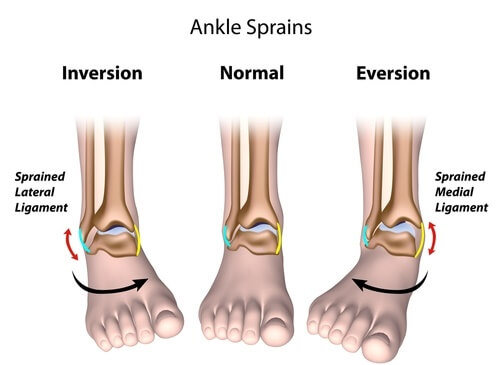Ankle injuries are among the most common kind of foot injuries and can be catastrophic and extremely painful especially when they occur repetitively. These are often characterized as sports injuries. A reality check – an athlete or not – you can have a twisted ankle anywhere, anytime, any day. Something as simple as walking on an uneven surface or stepping on a stone can result in a throbbing, unbearable sprain.
Age is no bar when it comes to recurrent ankle injuries. However, men between 15 and 24 years old are at a higher risk of an ankle sprain, as compared to women older than age 30 who happen to be at a higher risk than men otherwise. The most prevalent ankle injuries are those of sprains and fractures that encompass ligaments and bones in the ankle. But, you can also tear or strain a tendon.
Kinds of Ankle Injuries
Ankle injuries are usually classified into the following, based on the kind of tissue that has been injured – bone, ligament, and tendon. The most typical ones have been listed below:
1. Fracture: A fracture construes a break in one or more of the bones.
2. Sprain: A sprain is defined as damage caused to ligaments when they are strained beyond their normal capacity of motion. A ligament sprain can vary from many microscopic tears in the fibers that might lead to a complete tear or rupture.
3. Strain: A strain refers to damage to muscles and tendons as a result of being pulled or stretched too far.
What Causes Ankle Injuries?
An ankle injury can be caused due to any or all of the following factors:
1. Wearing faulty footwear,
2. Tripping or falling,
3. Landing uncomfortably after a jump,
4. Walking or running on undulating surfaces,
5. A sudden impact such as a car crash,
6. Twisting or rotating the ankle,
7. Rolling the ankle,
And many others.
Signs and Symptoms
The symptoms of both, a fracture and a sprain, are pretty much similar in nature. This is exactly why a sprain is often mistaken as a fracture and vice versa. Therefore, a post-injury thorough evaluation is very much a necessity. The signs and symptoms include:
1. Pain, sometimes, stinging and extreme,
2. Swelling,
3. Inflammation,
4. Bruising, and
5. Inefficiency in walking or bearing weight on the damaged joint.
With a sprain, the ankle may also be stiff where, with a fracture, the affected area will be gentle to the touch, and the ankle may also look distorted or out of place. In the case of mild sprains, the swelling and pain may not be too intense. But in case of a severe sprain, there is way too much swelling and shooting pain.
Ankle Injuries and Physiotherapy
To rehabilitate the hurt ankle, the most frequently used immediate approach is ‘PRICE’ that stands for Protection, Rest, Ice, Compression, and Elevation. Thereafter, physiotherapy constitutes to further treatment. Gradual introduction to bearing of weights, alongside a series of specific exercises devised to increase the patient’s mobility and careful monitoring of the ankle’s movement is a number of approaches used by your therapist. Eventually, when the level of pain decreases, you may also be exposed to various equipment like a treadmill, or a stationary bicycle, etc. Additionally, your participation in more challenging physical activities shall be increased as per your ability then. Almost always, a balanced program of increasing-demand exercises is part of the rehabilitation sequence.
To undergo a balanced and supervised rehabilitation program of physiotherapy, sign yourself up at Care to Cure Physiotherapy and Rehab Center for the same.


